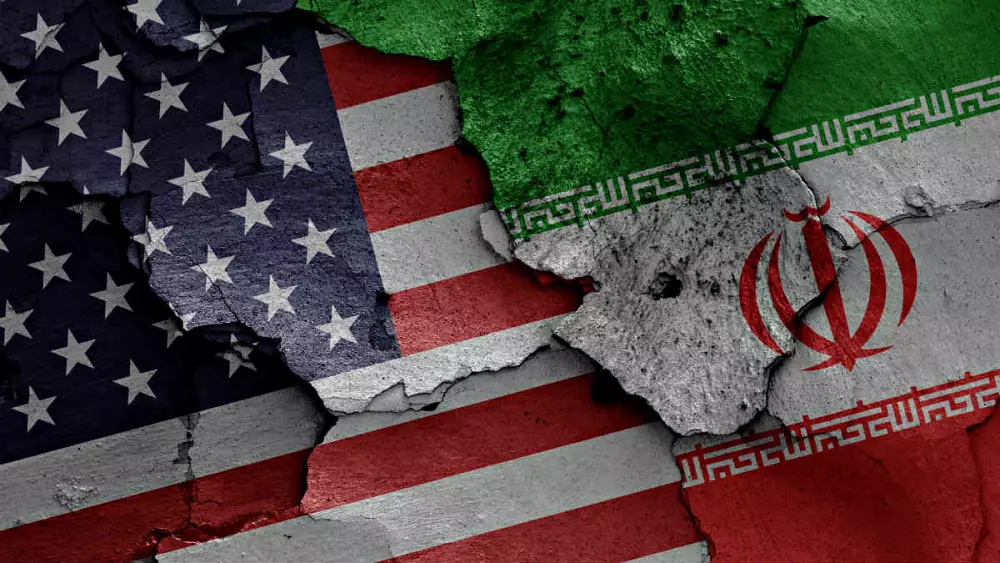
July 11, 2022
by AMCD advisor Walid Phares
After the Trump administration withdrew from the Iran Deal in 2018 and designated the IRCG as a foreign terror organization in 2019, the “Islamic Republic” was seemingly in open war against the United States, targeting the Trump White House in particular.
The Trump policy of “maximum pressures” deprived Tehran from significant income, and sanctions were still escalating by early 2020 when the coronavirus practically paralyzed U.S. foreign policy as the pandemic bogged down international relations globally.
As of the Riyadh summit in May 2017, when for the first time a U.S. president addressed the leaders of more than 50 Arab and Muslim countries and openly accused Tehran of masterminding terror in the region — while also pledging to work with Arabs and Israelis to stop the regime from threatening the Middle East, Iranian networks started launching campaigns against the Trump administration to undermine its policies and with hopes to drive Trump and his team out of the White House.
For the first time since 2009, U.S. policy took clear action toward containing Iranian power in the Middle East. Sanctions were multiplied, and a special coordinator to set up an international coalition to isolate the regime was appointed.
Ambassador Brian Hook initiated a wide-scale campaign, involving dozens of countries, to follow up on the economic measures intended to cut Iran off from world markets — and to target its military and intelligence apparatus, not just to force Tehran to back off its plans for nuclear military power, but to curb its militia expansion in the region.
On the ground, U.S. units and weapons systems in east Syria, Iraq, and the Gulf were increased, and measured strikes on pro-Iranian militias were conducted.
Thanks to the Warsaw conference organized by Hook in 2019, Tehran’s regime and the IRCG were gradually blacklisted worldwide, opening the path for the designation of the “Pasdaran Guard” as a terror group by the U.S. and its allies.
For four years, the U.S. shifted from Obama’s policy of engagement and replaced it with efforts to roll back Iran’s influence.
However, Tehran feared most one aspect of pushback barely used by the Trump administration: Western support to the Iranian opposition (or even national resistance).
Indeed, while the Pasdaran and its regional militias, including the Quds force, were determined to confront the Trump administration’s military, security, and financial measures in a “four-year long war” (and, if needed, an eight-year contest should Trump be reelected), the regime’s real Achilles heel was its own people.
After several uprisings against Khamenei’s ruling elite, including in 1999 and 2009, a third wave of popular protests hit the country during fall of 2019. The third revolt was the largest and most enduring against the regime and should it have received proper sustained support, could have capsized the regime.
The second revolt, known as the Green Revolution during June 2009, was abandoned by the Obama administration, bumping possibility for a major change in Iran for almost a decade.
The 2019 revolt in the Islamic Republic was accompanied by two other massive protests in two Iranian militia-controlled countries, Iraq and Syria. The three popular movements resembled Eastern Europe’s revolution against Soviet Communism.
Tehran’s ultimate worry was that the Trump administration would strongly back the three revolts against Iranian domination, leading to the collapse of the regime and its vassals in four Arab countries (if we add Syria and Yemen).
Iranian militias began threatening U.S. forces and interests in Iraq but were shocked with the elimination of Quds force commander Soleimani.
By the summer of 2020, another nightmare was added to Tehran concerns: the signing of the Abraham Accords between Arab countries and Israel.
While Obama preferred to collaborate with the Iranian regime to reach a deal, the Trump administration criticized the regime’s suppression of its own population, stopped ignoring Iran’s internal strife, and brokered deals with countries the regime sought to intimidate.
It became obvious that the Iran Deal lobby had to put all its weight against a renewal of such policy and was relieved by the ousting of the Trump administration, signaling an end to the “maximum pressures” policy against the regime.
However, as President Biden is visiting both Israel and Saudi Arabia, will his administration decide to perform another shift and reimpose on Tehran a new wave maximum pressures reminiscent of the Trump era in order to regain the friendship and partnership of the Arab Coalition and Israel — or will it resume the Obama policy of maximum cooperation with the Islamic Republic?
Options are open, and the window is narrow. What will it be?
First published in Newsmax.


One response to “Will Biden Take Trump’s or Obama’s Path With Iran?”
[…] began July with our advisor, Walid Phares asking, “Will Biden Take Trump’s or Obama’s path with Iran?” And it didn’t take long to find […]